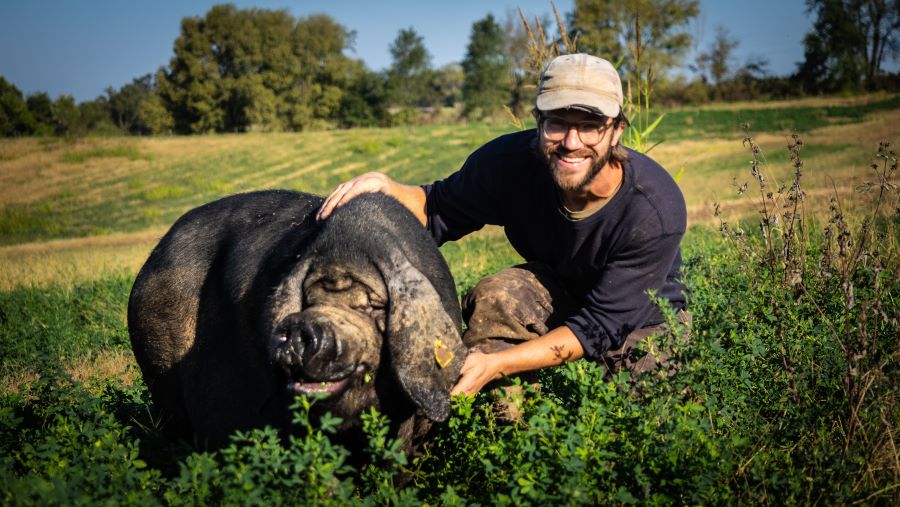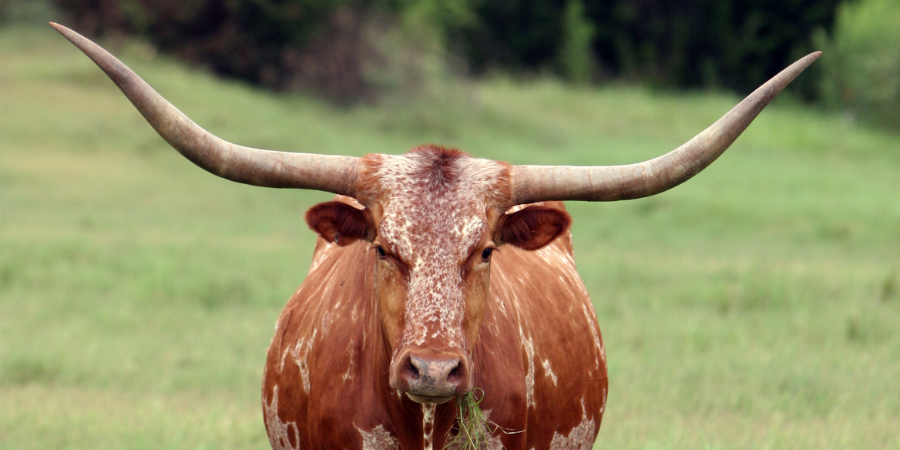Working Together to Protect and Raise Awareness about Heritage Livestock and Poultry Breeds
At Manna Pro®, we're all about Nurturing Life™. That's why we partner with The Livestock Conservancy in their efforts to protect and raise awareness about endangered heritage breeds of cattle, chickens, ducks, geese, horses, pigs and other farm animals.
Why is this mission so important? As Dr. Temple Grandin, award-winning author and animal advocate shares, "[it's] important to conserve diverse animal genetics. [these breeds have] valuable disease resistance and hardiness traits."
If you're thinking about raising farm animals, consider the heritage breeds found on The Livestock Conservancy's Conservation Priority List. Download a copy of the list below and read on to learn about some of the stunning and unique breeds you can add to your farm or homestead today.
The Conservation Priority List: “It’s More than Numbers”
For almost 50 years, the Conservation Priority List (CPL) has been our most important tool to save heritage breeds of livestock and poultry from extinction,” explains Dr. Alison Martin, Executive Director of The Livestock Conservancy.
The CPL ranks the threat of extinction for more than 190 heritage breeds across 11 traditional agricultural species, including cattle, goats, pigs, rabbits, sheep, chickens, ducks, geese, turkeys, donkeys, and horses. The List shines a bright spotlight on endangered breeds such as San Clemente Island goats and Mulefoot pigs. First published in 1986, it captures the curiosity of major media, environmentalists, beginning farmers, and animal lovers worldwide.

The Livestock Conservancy non-profit harnesses the work of more than 4,000 volunteer farmers, ranchers, shepherds, backyard enthusiasts, and breed organizations across America. “Our members ‘Nurture Life’ daily on the front lines of conservation, stewarding these genetic treasures for the security of tomorrow’s food and fiber systems,” explains Martin. “We are proud to count Manna Pro as one of our most loyal and generous partners in the fight to save these breeds.”
To produce each year’s CPL, population estimates of purebred registered animals are secured from breed associations, clubs, and individual breeders, as well as show participation for rabbits. Poultry population monitoring includes feedback from American hatcheries on breeding stock. Global partners such as Rare Breeds Survival Trust and the Food and Agriculture Domestic Animal Diversity database are also consulted.
Poultry census efforts have occurred about every five years since 1987. The first turkey census was in 1997, and the first waterfowl census was published in 2000. Rabbits were added to the CPL in 2006.
The annual counts are used to rank the level of endangerment into one of the five categories: Critical, Threatened, Watch, Recovering, and Study. Critical breeds face the greatest danger on the spectrum while Recovering breeds are preparing for graduation off the CPL.
Breeds in the Study category receive additional research on their history, genetic diversity, and domestic population. With limited resources, The Livestock Conservancy wants to ensure a breed can genuinely benefit from conservation efforts before adding them to the CPL.
History plays a key role in breed conservation. The Livestock Conservancy places particular emphasis on uniquely North American breeds such as Java chickens, Marsh Tacky horses, and Texas Longhorn cattle. Many of these breeds are conserved nowhere else in the world.

Farmers, ranchers, and shepherds throughout America use the List to guide stock selections. The CPL page is visited more than any other page on The Livestock Conservancy’s website, with thousands of clicks daily. You can download a color copy of the CPL here and explore more than 370 additional educational content pages, including detailed profiles for each of the endangered breeds. In the past year, the website has had almost 2M views. Visitors from 218 countries rely on the information the Conservancy develops, publicizes, and maintains.
Heritage breeds graduate off the CPL when their population has reached a stable level with sufficient genetic diversity, thanks to hundreds of dedicated breeders. Katahdin sheep were the first endangered breed to graduate off the CPL in 2013. Percheron horses, Nigerian Dwarf goats, Friesian horses, Wyandotte chickens, Orpington chickens, Highland cattle, and Ayrshire cattle followed.
“Each breed on the Conservation Priority List faces unique challenges, and each can benefit from the efforts of dedicated breeders,” describes D. Phillip Sponenberg, DVM, Ph.D. Sponenberg has served as The Livestock Conservancy’s Technical Advisor since the American Minor Breeds Conservancy was founded in 1977.
For the second year, Manna Pro sponsored the CPL's production. Their generous gift underwrites the hundreds of staff hours required to update and publish the rankings.
More than 4,000 individuals are raising heritage breed livestock and poultry on farms and ranches throughout America. The Livestock Conservancy is proud to share the CPL on their behalf and encourage thousands more to support heritage breed conservation.
Thank you, Manna Pro, for supporting the 2023 Conservation Priority List, and thank you for Nurturing Life.
Keep up with The Livestock Conservancy's mission and work by following them on Facebook, Instagram and YouTube!
